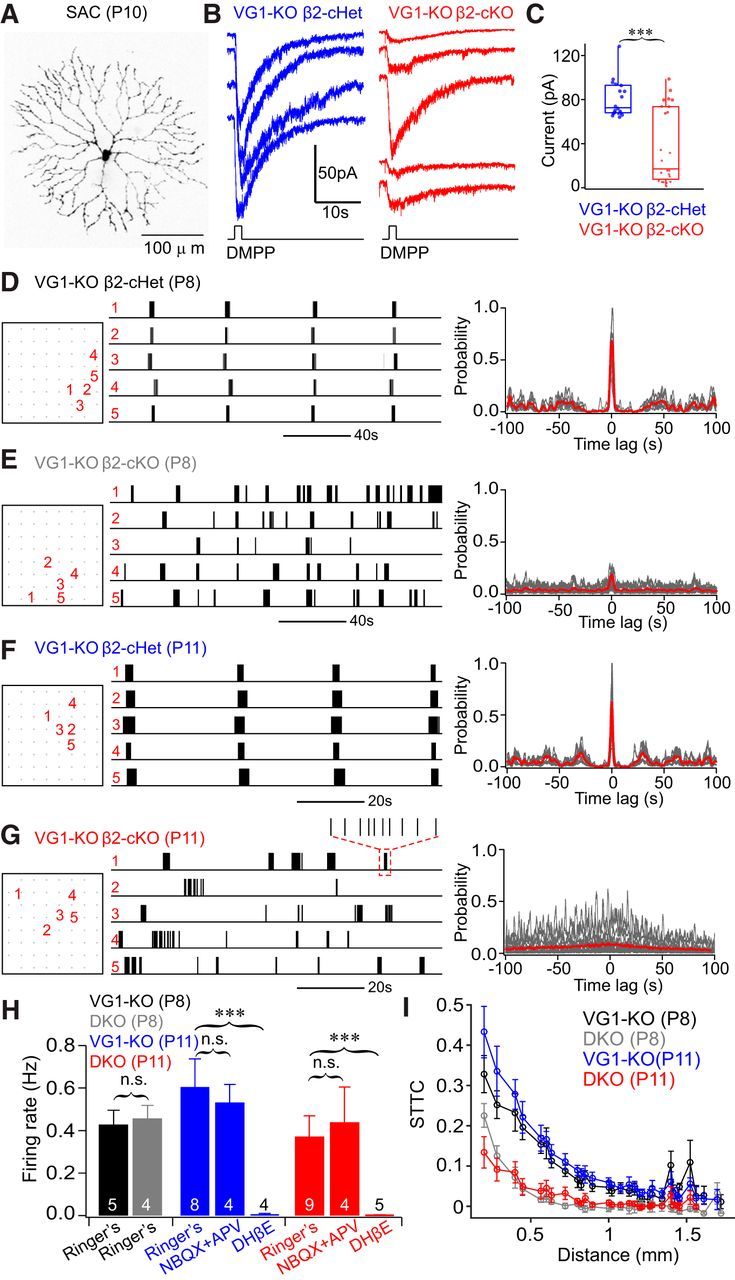Figure 2.

RGC spontaneous activity was desynchronized in mice with germline deletion of Vglut1 and conditional deletion of β2 from SACs (VG1-KO β2-cKO). A, Morphology of a SAC filled with AlexaFluor-555 after whole-cell recording. B, Example excitatory currents elicited by puff application of DMPP (1 mm) on P11 SACs in VG1−/−/ChAT-Cre+/β2fl/+ (VG1-KO β2-cHet, left) and VG1−/−/ChAT−Cre+/β2fl/− (VG1-KO β2-cKO, right) mice. C, Summary quantification of B. Amplitudes of DMPP-induced currents are much smaller and more variable in β2-deficient SACs. D–G, Example spontaneous spiking activity (left) and cross-correlation (right) of five neighboring RGCs recorded from retinas with either one (D, F) or two copies (E, G) of β2 deleted from SACs. All mice are Vglut1 knock-out background, and recordings were made at either P8 (D, E) or P11 (F, G). RGC spontaneous activity was highly correlated in β2-cHet retina at P8 and P11 (D, F, respectively) but was significantly reduced in SAC-β2-cKO retina (E, G, respectively). H, The average firing rate of RGCs recorded from the four groups of mice shown in D–G. Firing rate is comparable between β2 heterozygous and SAC-β2-cKOs at P8. The firing rate of SAC-β2-cKOs is slightly reduced at P11 but is not significantly different from β2-cHet controls: p = 0.22 (Student's t test). RGC spontaneous spiking activity in VG1-KO mice was blocked by DHβE at P11 but was unaffected by the addition of glutamate receptor antagonists NBQX and APV. I, RGC correlations (STTC) from the four groups of mice shown in D–F. In β2-cHet mice, the correlation of spontaneous RGC activity was similar at P8 and P11. In β2-cKOs, correlations were reduced significantly at P8 compared with β2-cHet controls, and there is almost no correlation of RGC activity at P11. n.s., Not significant. ***p < 0.001.
